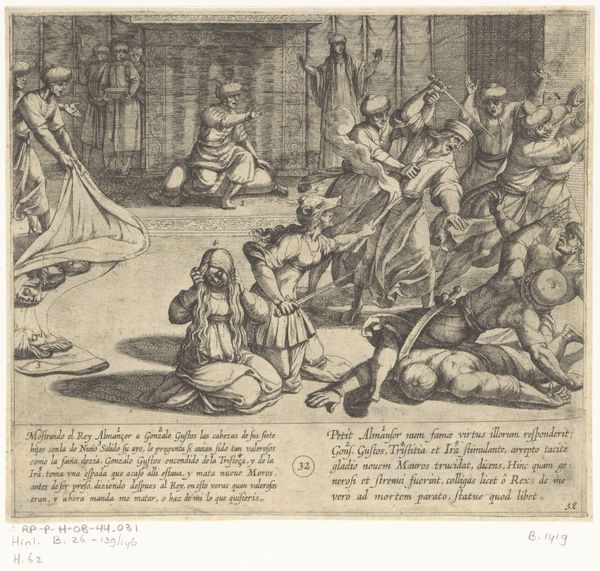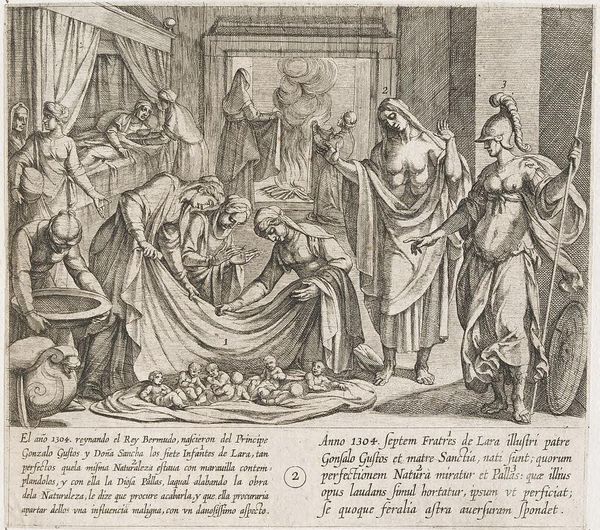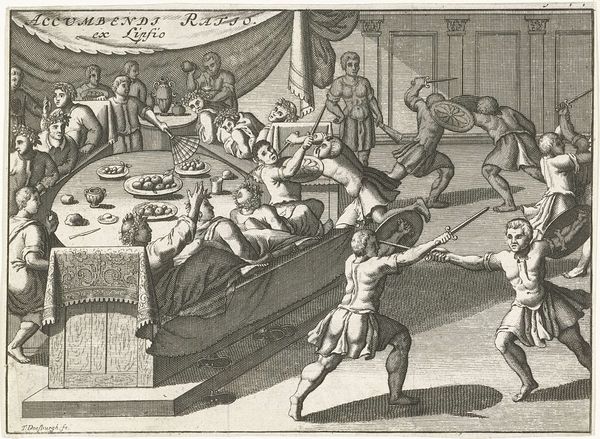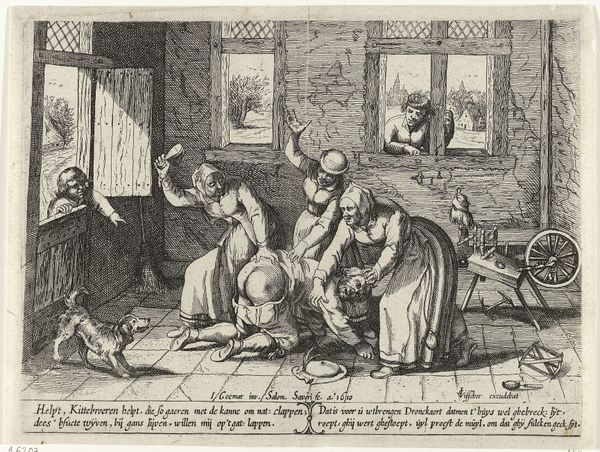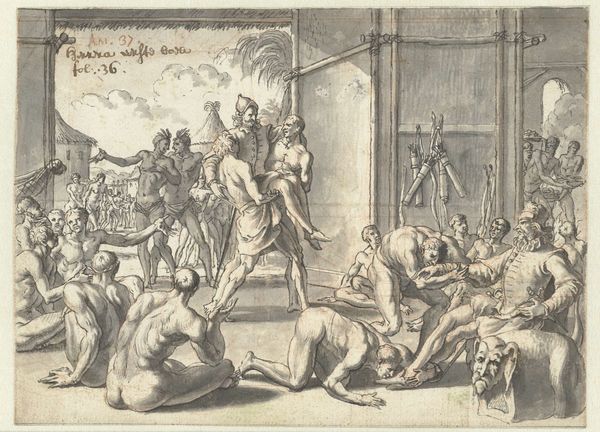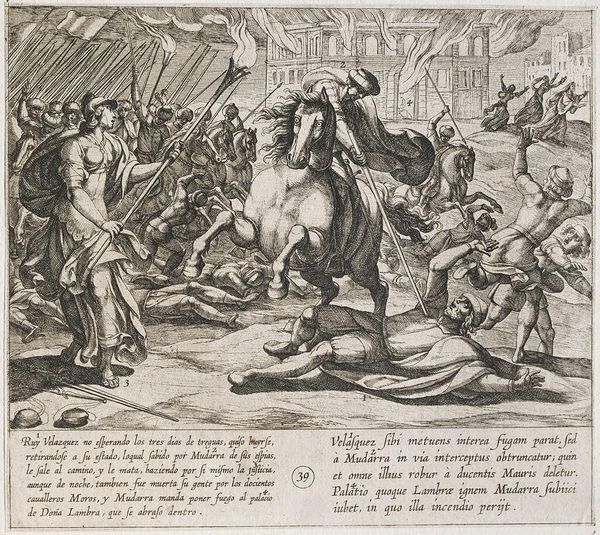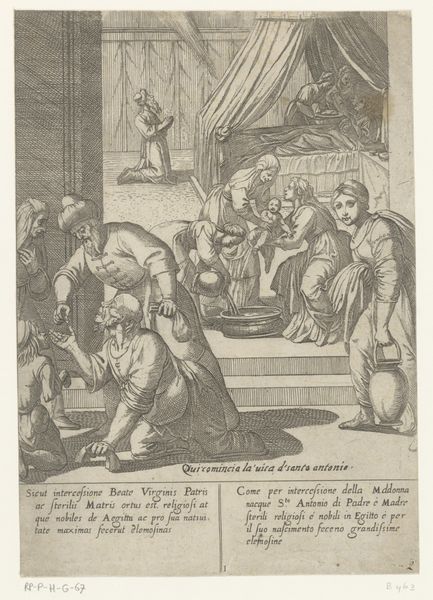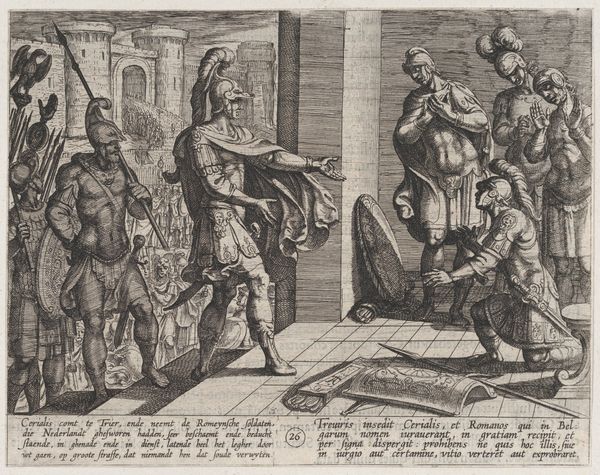
Copyright: CC0 1.0
Curator: Immediately, the energy hits you, doesn't it? It's raw. You can almost hear the clash of steel and feel the fury emanating from the central figure. Editor: Exactly. This print, "In Revenge, Gonzalo Gustos Slays Nine Moors," by Antonio Tempesta, captures a brutal scene, reflecting the artist's engagement with historical and narrative subjects. It's currently held at the Harvard Art Museums. Curator: It's a visceral piece, this scene of vengeance. Look at the figure cowering. It conveys so much about the vulnerability and brutality of the moment. It's like a snapshot of pure emotion, amplified. Editor: The composition is interesting; Tempesta uses the crowded space to create a sense of chaos and immediacy, mirroring the tumultuous historical period. The drama isn't just in the action, but in the expressions and postures. Curator: Absolutely. The almost frantic mark-making and bold gestures feel remarkably modern, even though Tempesta died in 1630. It transcends its time; it speaks of the human condition, the capacity for vengeance, and the price we pay. Editor: Yes, and by depicting such narratives, artists like Tempesta shaped public perceptions of history and morality. This work isn't just art; it's an argument, a statement about power, revenge, and cultural identity.
Comments
No comments
Be the first to comment and join the conversation on the ultimate creative platform.
